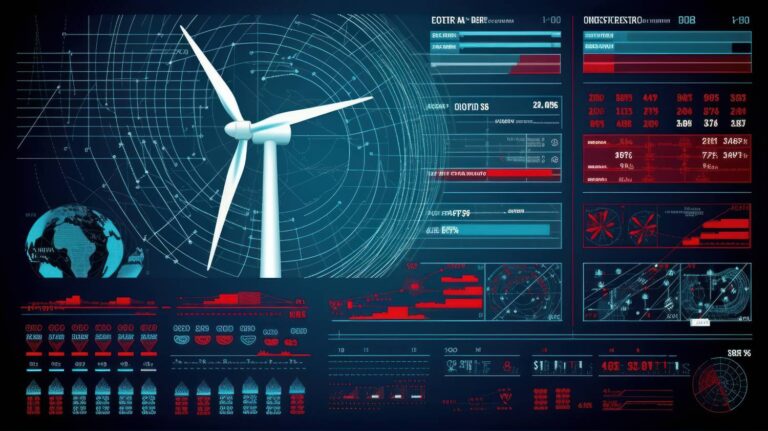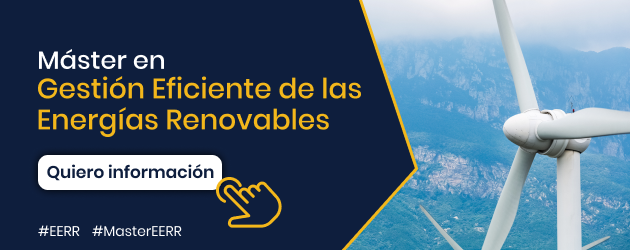Wind energy has quickly become one of the fundamental pillars of the energy transition toward a sustainable future. Amid the development of renewable energy, Spain has emerged as a leader in the field of wind energy.
In 2023, wind power represented the leading source of renewable energy generation in Spain, with a capacity of 30,810 MW. This represents an increase of 2.21% compared to 2022, positioning it as the technology with the largest share of the national installed capacity structure.
In the following article, we'll explore the latest advances in wind energy and how the incorporation of digital technologies into this rapidly growing field has enabled and will continue to drive the production and use of wind energy in an increasingly efficient manner.

Spain, a land blessed with wind
Spain enjoys a privileged geographical location, providing abundant wind resources, especially in regions such as Castile and León, Aragon, and Castile-La Mancha. These areas offer ideal conditions for the installation of wind farms, with constant, strong winds that can be harnessed to generate electricity sustainably.
Castile and León It is the autonomous community that is positioned as the leader with 6,640 MW (21.6%) generated during the year 2023, followed by Aragon with 5,246 MW (17%) and then Castilla – La Mancha with 4,876 MW (15%).
All of the above is evidence that in recent years there has been significant growth in installed wind energy capacity in Spain, a boom driven by policies supporting the energy transition, continuous improvement systems, and the application of technological innovations to this renewable energy sector. Onshore and offshore wind farms have proliferated throughout the country and along the Iberian coasts, contributing significantly to the country's energy mix and reducing its dependence on fossil fuels.
Digital technologies at the service of the wind grid
The combination of wind energy resources and a commitment to technological innovation has led to significant advances in the wind industry, enabling more efficient management and increased energy production by implementing various digital solutions aimed at optimizing the operation and maintenance of wind farms, as well as improving energy production forecasting.
The improvements implemented within the Industrial Revolution 4.0 are rapidly driving the evolution, efficiency, and viability of wind energy utilization in Spain, with systems such as those explained below currently being implemented:
Artificial Intelligence (AI):
AI is used to optimize wind farm performance by accurately predicting energy production, detecting wind turbine failures early, and optimizing operations and maintenance. AI algorithms analyze large amounts of data in real time, identifying patterns and trends to make informed decisions that maximize wind farm efficiency and profitability.
Big Data:
The collection and analysis of large volumes of data generated by wind turbine sensors and other connected devices enables more efficient wind farm management. Big data analytics provides valuable insights into operational performance, asset health, and environmental conditions, facilitating data-driven decision-making to improve wind farm productivity and reliability.
Machine Learning:
Machine learning is used to develop predictive models that can anticipate the future performance of wind turbines and optimize their operation based on changing wind conditions and other factors. These models learn from historical and real-time data, continuously improving their accuracy and predictive ability to maximize energy production and minimize operating costs.
Predictive Simulation Models:
Predictive simulation models use historical and real-time data to predict the future behavior of wind farms and optimize their performance. These models can simulate different operating scenarios and environmental conditions to identify the most effective strategies for maximizing energy production and minimizing risks.
Digital Twins:
Digital twins are virtual replicas of wind turbines and wind farms that integrate real-time data with simulation models to provide an accurate and dynamic representation of physical assets. Digital twins enable simulations and "what-if" analyses, optimizing the design, operation, and maintenance of wind farms and facilitating strategic decision-making.
Smart Sensors: Keys to Wind Energy Utilization

The successful implementation of wind energy projects depends largely on the accurate measurement and valuation of wind resources at specific sites. Digital technology has revolutionized the way a wind energy system is monitored and operated, and sensors play a crucial role in this transformation. These devices collect real-time data on a variety of key parameters related to the operation and performance of wind turbines and the wind farm as a whole. Some ways in which digital technology has impacted sensors in a wind energy system include:
- Greater Accuracy and Reliability: Advances in sensor technology have enabled greater accuracy and reliability in data collection. Digital sensors are able to more accurately measure variables such as wind speed, temperature, atmospheric pressure, and wind turbine vibration, providing more reliable information for performance optimization and early detection of potential problems.
- Sensor Network Integration: Digital technology has facilitated the integration of sensor networks into a wind energy system. These networks can be composed of a variety of sensors distributed across different locations within the wind farm, allowing for comprehensive, real-time monitoring of all components of the system.
- Wireless Communication: Digital sensors can use wireless communication technologies, such as Wi-Fi, Bluetooth, or wide area networks (e.g., LoRaWAN), to efficiently transmit data to a central processing unit. This eliminates the need for cables or physical connections, making sensors easier to install and maintain in remote and hard-to-reach environments.
- Advanced Data Analysis: Digital technology enables advanced analysis of data collected by sensors, using techniques such as big data and machine learning. These algorithms can identify patterns, trends, and anomalies in the data, allowing for a better understanding of system behavior and optimization of its performance.
- Predictive Fault Detection: Digital sensors can help prevent wind turbine failures and breakdowns by detecting early signs of deterioration or malfunction. The data collected by sensors can feed into predictive analytics models that alert on potential problems before they become serious failures, enabling proactive maintenance and repair planning.

Digital innovation applied to the wind energy sector is expected to continue advancing, with a focus on improving the intelligence and autonomy of wind farm management systems, optimizing integration with other renewable energy sources, and implementing more efficient and sustainable energy storage solutions. This is because the electrical energy generated within wind farms cannot be stored directly and must undergo various processes to be converted into another type of energy that allows for effective storage. This is a topic we will explore in more depth in future articles.
Delve deeper into the energy-digital transition towards innovative renewable energy sources and boost your professional career, becoming a leader in knowledge and practice in the renewable energy sector, thanks to our Professional Master in Renewable Energies, Smart Grids and Electric Mobility



































